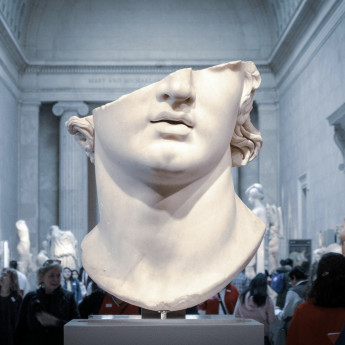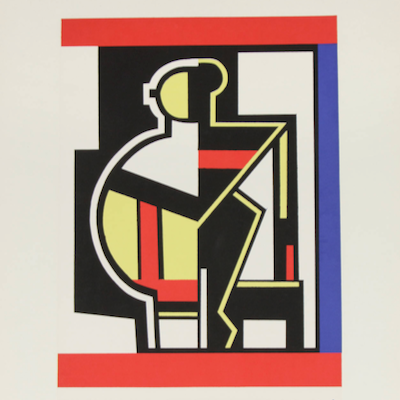
Details
Artist
Styles
Serigraph with Gold Foil on Paper // Louise Nevelson's Bicentennial Dawn, created in 1976, is a limited edition serigraph with gold foil that captures the artist’s signature style of intricate geometric forms and architectural depth. The composition features a series of abstract, sculptural structures that rise like towering monuments, highlighted by bold contrasts and rich black tones. The inclusion of gold foil adds a reflective quality, enhancing the sense of grandeur and mystique that Nevelson evokes. The play between light and shadow creates a dynamic, three-dimensional effect, drawing the viewer into the depth and complexity of the work. The serigraph's size (88.3 cm × 63.5 cm) commands attention, reflecting Nevelson's sculptural expertise and her ability to translate it into print.
Bicentennial Dawn, 1976
form
Medium
Size
88.3 x 63.5 cm
- Inches
- Centimeters
Edition
Price
- USD
- EUR
- GBP
Details
Artist
Styles
Serigraph with Gold Foil on Paper // Louise Nevelson's Bicentennial Dawn, created in 1976, is a limited edition serigraph with gold foil that captures the artist’s signature style of intricate geometric forms and architectural depth. The composition features a series of abstract, sculptural structures that rise like towering monuments, highlighted by bold contrasts and rich black tones. The inclusion of gold foil adds a reflective quality, enhancing the sense of grandeur and mystique that Nevelson evokes. The play between light and shadow creates a dynamic, three-dimensional effect, drawing the viewer into the depth and complexity of the work. The serigraph's size (88.3 cm × 63.5 cm) commands attention, reflecting Nevelson's sculptural expertise and her ability to translate it into print.
- Recently Added
- Price (low-high )
- Price (high-low )
- Year (low-high )
- Year (high-low )
What is Cubism?
Cubism is an art movement that aimed to depict multiple perspectives of objects or figures within a single picture. Artists Georges Braque and Pablo Picasso pioneered this style around 1907. The name Cubism emerged from their use of geometric shapes and outlines that often resembled cubes, breaking objects down into abstracted forms.


















